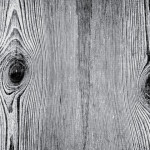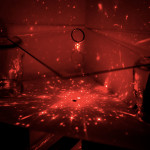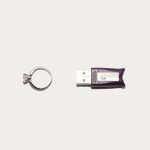To me, getting the best value for money means getting the most out of whatever you're trying to optimise for. This tutorial is designed to help you take what you've learned in level 2 to choose specific sets of proportions to maximise the characteristic that you're going for, whether it's size, light return, fire, or scintillation. When optimising a diamond, it's important … [Read more...]
Prosumer Level 3
- Maximising the Value of Your Diamond
- Fancy Color Diamonds
- The Art of Diamond Cutting
- The True Value and Cost of Diamond
- Hearts and Arrows Formation
- Yaw, Twist, Distortion, and Azimuth Shift
- Virtual Facets
- Diamond Treatments
- Diamond Simulants
- Surface Graining vs Internal Graining
- Ray-Tracing, Binocular Rivalry, and Effective Total Angular Size (ETAS)
- Computer-Simulated Diamond Images
Fancy Color Diamonds
Fancy color diamonds (FCDs) are rare and because of this they are also more expensive than colorless diamonds. The rarest and most expensive fancy color diamonds are pink and green and a large pink or green diamond with a vivid color can been sold at auction for millions of dollars per carat. Even if you're not in the market for an FCD, I think you will learn something about … [Read more...]
The Art of Diamond Cutting
You may be wondering, what's the point of this tutorial? After all, we are diamond prosumers not diamond cutters. Well, not only does learning a bit about the process of diamond cutting allow you to appreciate the value of your diamond more, it can also help you understand the cutter’s thinking process so you can better understand their decisions. This helps us make better … [Read more...]
The True Value and Cost of Diamond
The aim of this tutorial is to teach you more about the product that you are spending so much time learning about rather than simply teaching you how to select the perfect one. I also think it will be a nice break away from the technical topics. Let me show you how diamonds are created in nature and how they're mined. On the way, you will discover why diamonds are so special, … [Read more...]
Hearts and Arrows Formation
Understanding hearts and arrows formation allows you to have a better appreciation of the cutting precision that is required to form it. I will take you through exactly which facets are responsible for which part of the pattern. If you are seeking an H&A for its perfection, then it this is important for you to be able to analyse the H&A images to determine in detail the … [Read more...]
Yaw, Twist, Distortion, and Azimuth Shift
This tutorial aims to explain what yaw is, why it occurs, how it occurs, how to detect it, and how it affects the appearance of a diamond. I will also try to clear up the confusion regarding this topic in relation to the terms yaw, twist, distortion, and azimuth shift. What is Facet Yaw? Facet yaw, a term coined by Brian Gavin, is a type of facet distortion that can occur … [Read more...]
Virtual Facets
I have mentioned virtual facets several times before in my previous tutorials and so if you've been following my tutorials, you should already know that they are simply what we call the reflections of real facets. The real facets being the table, crown, pavilion, star, upper and lower girdle facets, girdle, and the culet. Virtual facets are ‘virtual’ because when we look at … [Read more...]
Diamond Treatments
Diamond treatments refer to clarity or color enhancement techniques. Even if you are not in the market for a treated diamond, an understanding of these methods may help you advise those who are comfortable in passing on the knowledge they've learned here. Clarity Enhanced Diamonds Clarity enhancement techniques include laser drilling or fracture filling. The justification for … [Read more...]
Diamond Simulants
Being aware of the types of diamond simulants that exist can protect you as a consumer of real diamonds. This is perhaps the number one concern of most people when buying a diamond. Is it real? Well the thing about diamonds is that its properties are so unique that it is pretty hard to fake. I will be talking about ways you can quickly tell whether a stone is likely to be a … [Read more...]
Surface Graining vs Internal Graining
Surface and internal graining are characteristics of diamond that very few people actually have a good idea of what it’s all about. The first thing you need to know about graining is that it is natural and it occurs because of defects in the crystal structure of diamond. In this article, I am going to be explaining what the differences are between surface and internal … [Read more...]
Ray-Tracing, Binocular Rivalry, and Effective Total Angular Size (ETAS)
One of the most common mistakes a beginner makes is to over-rely on a single tool that evaluates a diamond's light performance. The reason is that the all of the popular tools have limitations so you need to know what they are. For example, idealscope and ASET images only show you a diamond in a single viewing environment where in reality you will be looking at your … [Read more...]
Computer-Simulated Diamond Images
If you're thinking about buying a diamond online, the most important thing you need to do is to get an image of the diamond. Many online vendors will only provide sample images of a diamond so you need to make sure that the image you're looking at is actually of the diamond. However, you might be surprised to find out that even an actual image of a diamond might not be a real … [Read more...]


